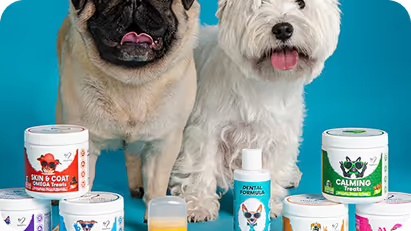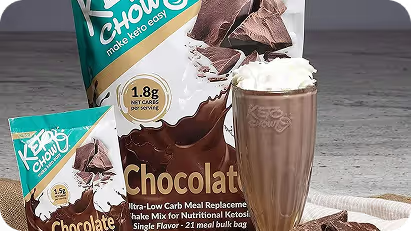Limited Supply Podcast: 5 Essential Tips for DTC Marketers
The Limited Supply Podcast is a valuable resource for marketers in the Direct-to-Consumer (DTC) industry. Hosted by industry veterans Nik Sharma (Sharma Brands) and Moiz Ali (Native, acquired by P&G), the podcast delves into the latest trends, strategies, and insights that drive success in the DTC landscape.
The Limited Supply Podcast offers in-depth discussions and expert opinions on real problems that founders face daily, sharing actionable insights (no fluff!) on changes that can improve campaigns and promotions.
DTC brands rely heavily on their marketing efforts to reach and engage customers. Effective marketing strategies help DTC brands build strong customer relationships, foster brand loyalty, and drive sales. Here are five marketing tips shared on the Limited Supply Podcast.
Tip 1: Ads - Focusing on Overlooked Aspects
Nik and Moiz discuss excellent ideas for maximizing the effectiveness of your ads, especially with rising CPCs on social media platforms. Here are some often overlooked tips:
- Saving Money via Testing on Low-Cost Platforms: Nik mentions using short-form platforms like TikTok Shorts, which are inexpensive to run, to gauge performance before investing in higher-cost platforms.
- Consistency: It’s crucial to maintain consistent targeting and messaging for specific groups. For example, if targeting protein powder ads to people aged 20-30, track engagement metrics like clicks and time on site to evaluate campaign success.
- Setting Up a Facebook Funnel: Be aware of targeting specific audiences for specific durations. A structured approach might include focusing on brand awareness from Day 1-10, pushing the middle funnel from Day 11-20, and lower funnel from Day 21-30.
- Comment Moderation: Moiz emphasizes the importance of actively moderating comments on social media ads. Instead of removing negative comments, smartly addressing them can improve engagement and protect your brand’s real estate.

Check out this podcast of Limited Supply on 5 Paid Strategies that can make or break your brand - the
Tip 2. Optimising for ad events, not for clicks
Nik and Nood’s VP of Marketing, Bryan Cano, explains why optimizing for an event, such as the duration of time spent on a site, is more effective than focusing on clicks:
- Meaningful Engagement: Events like time spent on a site indicate genuine user interaction with content, leading to higher conversion rates.
- Better Conversion Rates: Optimizing for engagement metrics ensures the audience is truly interested, driving more effective conversions.
- Deeper Insights: This strategy provides deeper insights into user behavior, enabling marketers to refine their approaches for better outcomes.
In contrast, focusing solely on CTR goals doesn't reveal much about the success of a campaign. Bryan emphasizes the value of optimizing for engagement metrics over clicks or CTR to drive more meaningful interactions and better marketing results.

Check out this clip Nik Sharma and Bryan Cano: https://www.youtube.com/watch?v=avfURa1IceY
3. Where should you place your social proofing?
Social proofing helps you drive credibility of your product and helps build brand loyalty and drive up repeat purchases - Nik talks about the importance of social proofing and its placements.
Here are some of the places you can insert your social proofing:
- Product Pages: Showcase customer reviews and ratings to build trust and influence purchasing decisions.
- Home Page: Highlight testimonials and success stories to create a positive first impression.

Inserting social proof helps build trust by showcasing favorable experiences from your customers.
- Checkout Page: Display recent purchases and customer feedback to reassure potential buyers.
- Email Campaigns: Include testimonials and case studies in promotional emails to enhance credibility.
- Social Media: Share user-generated content and customer reviews to engage followers and build community trust.
- Advertising: Incorporate social proof in ad creatives to enhance persuasiveness and conversion rates.
4. Should you try TV ads?
TV ads can effectively reach a broad audience, but it's crucial to understand your target market and ensure your message resonates with them. By thoroughly analyzing customer data and behavior, brands can craft compelling TV ads that drive engagement and conversions. Without this understanding, TV ads may not yield the desired results, leading to wasted ad spend.

Juhi Pikale, VP of Marketing for Fabletics, met with Nik and Moiz on the Limited Supply Podcast to discuss the benefits of running TV ads and their impact on Facebook ad budgets.
Nik raised an important question about attributing TV ads' ROI. Juhi explained that one method is to monitor site visit spikes within a 5-minute window of a TV ad airing, giving a rough idea of effectiveness. Another approach is to ask prospects how they found you through surveys or direct inquiries. Juhi also noted that if the budget is a concern, opting for 15-second ads might be a viable option, as most TV platforms offer 15, 30, and 60-second slots.
Tip 5. Reviving SMS - using SMS tactfully for maximum impact
Many end users find SMSs annoying and it is tempting to skip this platform altogether - brands are still underutilizing SMS - and the open rates indicate that there is value to be realised here
- Realizing the value of SMS - Moiz said that the open rates (as high as 100%) and CTRs (10-15%) are very encouraging - hence with selective use, can have a significant impact on revenue
- Retention-based SMSs - Ensuring you are a part of the mindshare of your prospect in the category that you are selling - frequent posts are less annoying when they are fun to read and are engaging.
- View-based triggers: Website automation scripts synced with your text platform: Tools like Postscript offer an automation flow to trigger a specific message if your website user spends time on a specific page.
An SMS automation/platform tool like Postscript can help you with:
- Enhanced Engagement: Build Real-time, two-way conversations foster stronger customer relationships.
- Higher Conversion Rates: Personalized, conversational messages increase conversion rates.
- Being more Cost-Effective: Despite higher costs than email, SMS's higher engagement justifies the investment.
- Segmentation Power: Tailored messaging based on behavior, demographics, and psychographics
- Community Engagement: Building a brand community through SMS enhances loyalty and trust.

Link to the full SMS Marketing Masterclass here: SMS Marketing Masterclass with Postscript Co-Founder, Alex Beller
The Limited Supply Podcast is a treasure trove of insights and practical tips for DTC marketers. By implementing these tips, you can enhance your marketing efforts, build stronger customer relationships, and drive your brand’s success in the competitive DTC landscape. Stay informed, stay innovative, and leverage the power of marketing to propel your DTC brand forward.
Table of contents























.png)







.png)






































